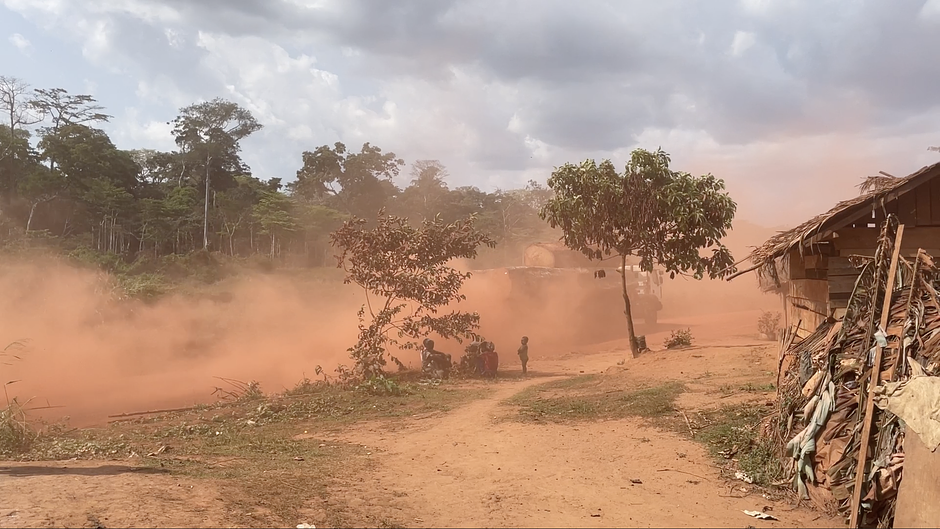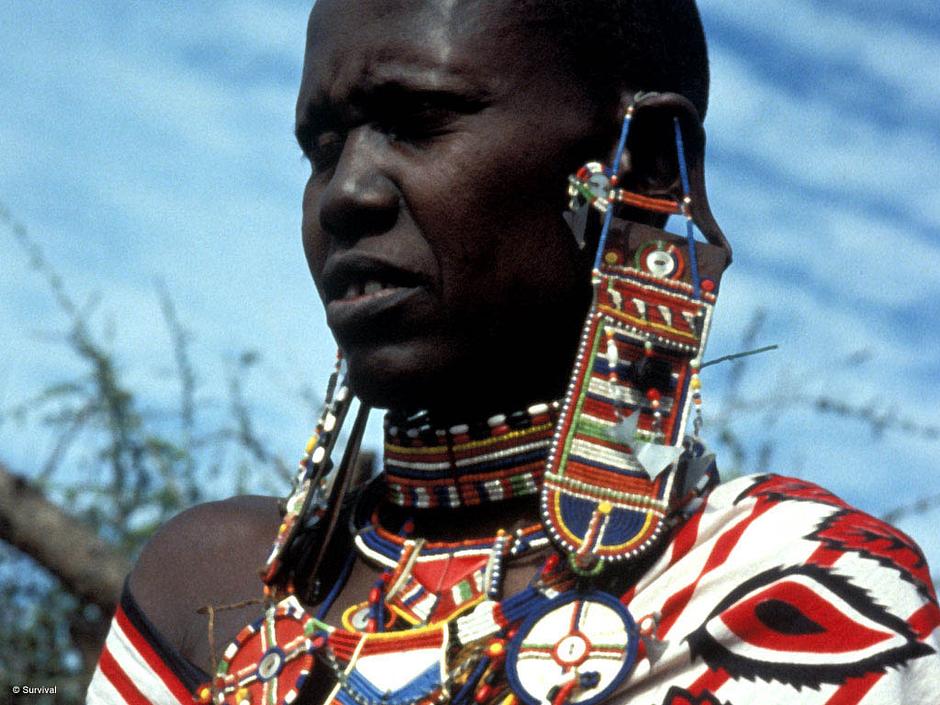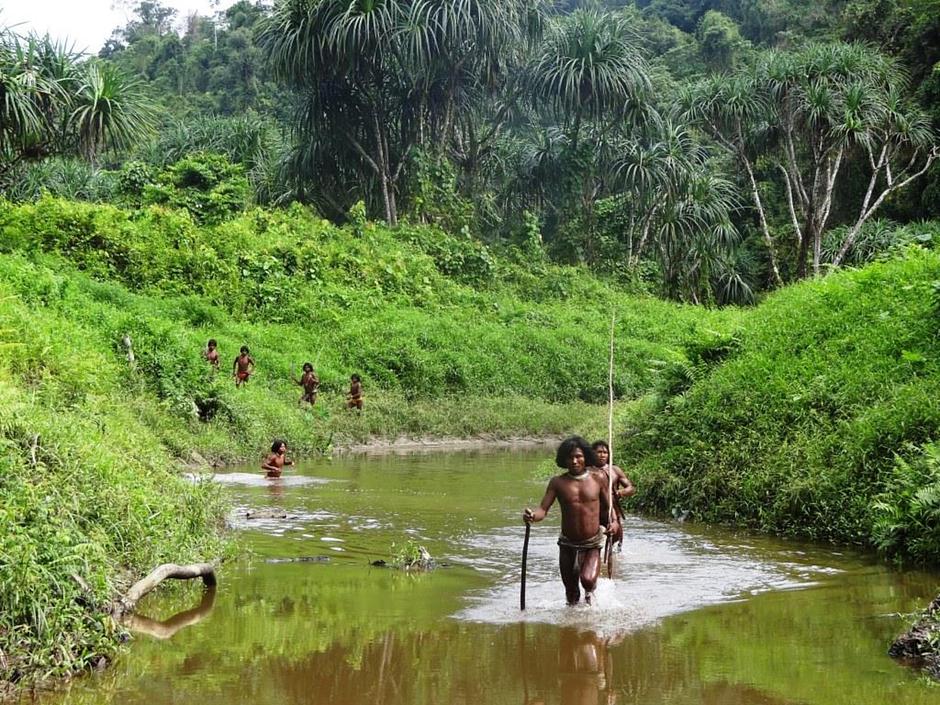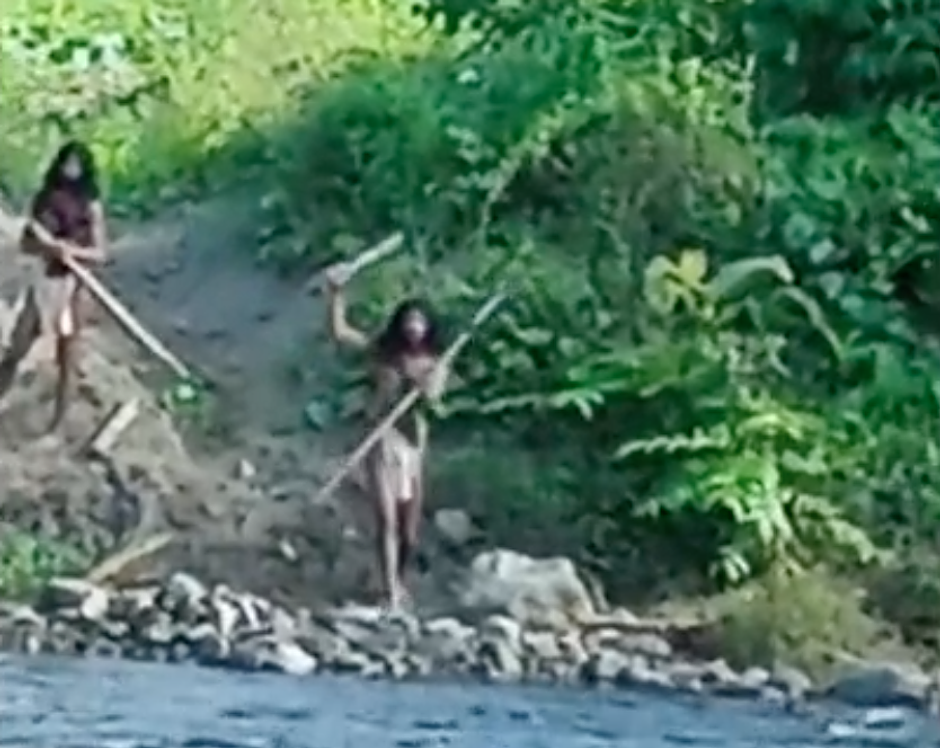Anatomy of a Multi-Million Dollar Colonial Carbon Project in Kenya
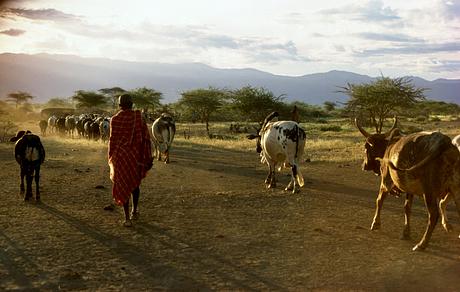 © Beckwith & Fisher
© Beckwith & FisherBy Gatu wa Mbaria*
March 15, 2023
Stop Blood Carbon projects on Indigenous lands
The legality, credibility and worth of a multi-million-dollar carbon trade project that forces pastoralists in Kenya to abandon age-old cultural practices, has been put to question in an assessment report that depicts it as conceptually misguided, abusive, potentially dangerous, lacking in genuine consent from the owners of the land and doomed to fail.
Based in northern Kenya, the project was however okayed by international assessors and big-buck companies that have already bought the credits. The organization behind the project has been earning millions despite the fact that it does not own the land and has been unable to prove whether, or how, the project stores carbon in the soil. Nevertheless, this has not stopped the organization from hoisting it as one of the largest carbon removal projects on earth.
Painstakingly, and as if wielding the metaphorical fine-toothed comb and literary scalpel, Survival International has dissected the project in ways that expose its fundamental flaws, conceptual weaknesses and inherent inability to achieve what it loudly asserts and gets paid for. The international indigenous-rights organization has inserted the analytical blade deep into the bowels of project in the report; The NRT Northern Grassland Carbon Project.
As one reads through the 63-page analysis, the image of a deceptive, elaborate scheme, that has little to do with what it says it is all about, emerges. Prominent too is the feeling one gets that the whole project has not aligned itself with the basic tenets of soil carbon retention. Besides this, an image builds into the mind that the project owners have capitalized on the haplessness of the communities it purports to work with, and the unquestioning eagerness of big polluters in the West to escape the blame by paying for what can literarily be described as hot air. These are polluting companies that have pumped millions to buy the carbon credits in the inexplicable belief that paying someone else in the southern hemisphere lessens the guilt associated with polluting the planet.
Unambiguously and with clarity, the exposé narrates the story of a large, well-funded non-governmental outfit that has unabashedly continued to benefit from distorting the truth besides destabilizing and sidelining key traditional institutions that have managed and guided grazing practices adopted by pastoralist communities in northern Kenya over long periods of time.
Welcome to the Northern Kenya Grasslands Carbon Project (NKCP); a project that attempts to achieve a number of firsts but fails dismally in almost all of them, if the exposition by Survival International is anything to go by.
Traditions influence resource use
As the narrative unfolds, it emerges that the project covers about two million hectares of one of the most remote and dry regions of Kenya. It has brought on board some 13 wildlife conservancies that host more than 100,000 inhabitants, most of whom are members of the Indigenous Samburu, Borana, Maasai and Rendille communities. Being pastoralists, the inhabitants rely on the naturally-occurring pastures, water, salt and other resources so vital for their extensive livestock rearing lifeline. To these communities, the health and wellbeing of cattle, sheep, goats, camels and, to some extent, donkeys is directly linked, in more ways than one, to their own survival, wealth and status. They inhabit a region with a delicate ecology which ‘drove’ them to come up with a rational and pragmatic indigenous resource use and management system that places the elders in the driving seat, giving them the power to make decisions that bind other members of the community. Today, the pastoralists are in dire straits due to droughts that have risen in severity and frequency owing to climate change. As a result, the region now experiences a minor drought every two to three years and a major one every ten years or so, often resulting in severe famines and attendant deaths of thousands upon thousands of livestock.
NRT’s support from the moneyed
This is the ecological, socio-economic and cultural contexts upon which the Northern Rangelands Trust (NRT) based the carbon trading project. Established in 2004 by Ian Craig, a rather ‘unseen’ conservation personality from the old colonial stock, NRT prefers to be known as a “membership organization.” The body states that it improves people’s lives, creates and sustains peace and conserves the environment. Today, the organization boasts of bringing to its fold some 43 community conservancies spread over 63,000 square-kilometers in northern and coastal parts of the country. This area is significant as it constitutes more than 10 percent of Kenya’s total land surface.
NRT’s conservation work has drawn in the moneyed lot in the West who have generously kept it way above the waters. The amounts it receives each year are humongous and can turn other green organizations greener with envy. USAID, for instance, has donated some US$32 million since 2004. Over the years, USAID’s support was topped up by generous contributions from the who-is-who in the European giving order. Besides the European Union, Denmark and France, the organization receives over $25 million from 46 donors each year. It is not known exactly how much the organization receives from whom as it does not publish its annual accounts. However, the financial support NRT receives has greatly aided in raising its visibility as a wildlife conservation outfit whose model was adopted by the EU as the latter rolled out conservation in 30 African countries under NaturAfrica banner. Corporates too have come calling with accolades and cash as NRT gave them somewhere ‘to hide their guilt’. For instance, the World Business Council for Sustainable Development pampered NRT with the “Lighthouse” Award last year.
With such support
With such encouragement and support, NRT has kept adding on to its initial conservation mandate. Besides taking up the maintenance of peace and security, the organization is also involved in livestock marketing. Its conservation, peace-making and security initiatives have however generated much hue and cry from many people in Kenya who question why a non-governmental body has armed units and controversially takes up what is solely mandated to the Kenya government by the country’s constitution. But NRT feels justified in its peace-building mission saying that this creates the right conditions necessary for its conservation programme. But those opposed, including many of the affected indigenous people, say that the organisation’s conservation activities are disruptive to the lives and livelihoods of local people as it requires them to cede part of their communally-owned lands to create room for “core” areas that are exclusively used by investors, tourists and wildlife. There have also been claims that well-trained and armed NRT rangers were involved in extrajudicial killings and other forms of human rights abuses as documented by Oakland Institute, a US-based think tank in the Report; Stealth Game: “Community” Conservancies Devastate Land & Lives in Northern Kenya. The report dealt a devastating blow to the image of the organization as it exposed how the NRT and its partners, allegedly dispossessed the herder communities of their ancestral lands, through corruption, violence and intimidation, to create and maintain the wildlife conservancies.
Seemingly, NRT and controversy appear to be bedfellows. According to the report, the organization rolled out the carbon project almost a decade ago when the claims made against it were starting to gain public attention. The project is ambitious, opens new grounds in the global carbon trading regime and is hinged on the involvement of pastoralist communities in the region. Essentially, it leans on the thinking that were the pastoralists to shift away from traditional “unplanned” grazing and embrace “planned” rotational grazing, this would give vegetation over the vast area a better chance to grow prolifically. Consequently, (as the thinking goes), this would result in greater storage of carbon in the soils of the project area. NRT estimated that as much as 750 kilos of additional carbon would be stored in each hectare every year. Cumulatively, the organization estimated that the project could generate about 1.5 million tons of extra carbon ‘storage’ per year and thereby produce 41 million tons of carbon credits for sale over its project’s 30-year lifespan. This would, in turn, generate between $300million-US$500 million, according to Survival’s estimates. With such highly-attractive end results, NRT labelled the project a “natural climate solution” as it went to the carbon credit market.
Project okayed by assessors
Before taking the carbon credits to potential buyers, the project was taken through the Verra System -which is touted to have a “rigorous set of rules and requirements.” Documents show that the auditors appointed to ‘validate’ the project struggled for several years to get answers to some of their questions about serious problems with the project. Some were never answered but, astonishingly, the project was eventually passed and credited with generating real, credible and permanent emissions reduction. It was attributed with the ability to store additional carbon in the soil. Since it was okayed in the Verra System, the project has so far generated some 3.2 million carbon credits which NRT’s agents had sold out by January 2022. Although the gross income the organization received is unknown, Survival International estimates that it has generated between US$21 million and US$45 million with some of the credits being offloaded to Netflix and Meta Platforms (formerly Facebook).
Impenetrable wall of conspiracy
Usually, the true value of claims made by conservation NGOs in Kenya and elsewhere in Africa is hard to ascertain. This is because the same outfits are allowed to assess the before-and-after scenarios of the conservation projects they are involved in. In some cases, local and international assessors are contracted to do evaluation studies. But as external assessors visit the field, they are usually chaperoned by officials from the same NGOs they were commissioned to scrutinize.. Even where assessors demand to do ‘independent’ reviews, their work is largely hampered by language, geographical and cultural barriers. This has created an almost impenetrable ‘wall of silence and conspiracy’ because what ends up constituting the findings on impact is actually more or less what the NGO wanted the assessors to know in the first place. By the end of the day, the NGO ends up with a good image and a nod from donors. It is no wonder that there is little to show for all the billions pumped into conservation; in any case the species have been disappearing; wildlife populations are dwindling while the worst effects of climate change bites hard even within the NRT carbon project.
As far as the carbon trading project is concerned, the truth typically deviates, to a great extent, from what is stated by the organization and the project assessors. Survival International established an unmistakable dichotomy between what the NRT has eloquently put in the project’s documents and the reality in the project area. Most importantly, the NRT did not inform the communities properly about the project “let alone receive their free, prior and informed consent to it.” As Survival International officials toured the area, they established that the organization had, at best, merely shared the required information to a small number of people who sat in the boards of the 13 conservancies. However, the information given was limited; was not shared in native languages and was done “long after the project started.” The same was reported by the project’s auditors during the initial verification of the project. This is a clear violation of some of the principles that carbon trading projects are expected to adhere to.
The entire project can be seen as one that exploits and grossly interferes with the lives of tens of thousands of pastoralists. As the project unfolded, the communities have been increasingly losing control of their lands and the power to determine how to use it. As the organization went about removing what it calls “cultural barriers” to carbon retention in the soil, the unfairness of the entire approach emerged in the sense that people who have very little to do with polluting the planet were forced to alter how they have survived in order to adhere to the dictates of an organisation that used falsehoods and unproven methods to get finances it does not deserve. This notwithstanding, the project’s attempt to replace the prevailing practice in which boys herd livestock by paying cash to adults to be doing the task. This is seen as a blatant attempt to destroy the dignity of the men and women who are traditionally not involved in such an activity. This, as the report says, is likely to face “rejection and failure.”
In addition, the report raises serious issues on the legality of the project. Half of the project area is on lands classified as trust lands which are subject to provisions of the Community Lands Act 2016. The Act mandates, not the NRT, but the relevant County governments with “holding the land in trust” until they are formally registered as community lands. However, the registration process has taken too long with the delays being partly attributed to what some locals say is “active obstruction” by the powerful organization. Indeed, the legality of the conservancies established by the NRT was challenged in the Environment & Lands Court in 2021. The case is still going on.
Related to the legality of the project is the question raised in Survival International’s report on whether NRT has the right to trade on carbon stored in the soils of lands that it does not own. The organization did not have a formal agreement with the communities in the 13 conservancies before it embarked on the project. It cobbled together the agreements in June 2021, eight-and-half years after it started the project. On this, the report says that “NRT did not have a clear contractual right to sell the carbon during this period.”
In its communication, NRT has consistently claimed that it does not own the relevant lands. One then would expect that it would have let the biggest share of proceeds from the carbon trade project go to the communities. However, Survival International says that the organization not only continues to hog the lion’s share of the proceeds, but has the final say on how the proceeds are distributed. The organization claims that it dishes 30% of the total funds to the 13 conservancies “for purposes which the communities themselves determine.” But Survival International disputes this. “This largely proves not to be the case,” the report avers and goes on to state that 20% of the conservancies’ portion is actually spent on “NRT’s prescribed” grazing practices while 60% is distributed at the discretion of the organization. Community leaders interviewed during the investigation by Survival International said that the distribution is done “through a largely opaque process” and that the money “is used to exert control over communities and to promote NRT’s own priorities.”
Whipping community acceptance
The report terms the credibility of the carbon offsets as “wanting” and its impact on the pastoralist communities as “negative.” The project’s very success (or lack of it) depends on whipping communities to accept a radical shift from the age-old traditional grazing pattern they have been practicing, to what the organization believes would bring about the required carbon offsets. But to Survival International, this could “endanger livelihoods and food security” of the pastoralists besides being “culturally destructive.” By establishing a project which demands that the herders confine their animals to the project area, NRT’s desire was to align the project with one of the requirements of the relevant methodology. But the whole thinking attaches no value to what is obviously a rational and pragmatic animal husbandry practice adopted by the communities hundreds of years before the project was ever started.
More poignantly, NRT’s demand for a change in grazing patterns appears insensitive to the problems pastoralists have been experiencing with worsening changes in the climate. This is also a typical example of the predicament presented to communities in Africa whenever they are forced to engage in activities that hardly cater for their own survival and interests. To many ‘woke’ Kenyans today, although NRT was formed in Kenya, its very philosophy and operations are ‘alien and transplanted’ from Europe. Many deem it as a body that has boldly and with single-minded determination rekindled the colonial scenario in which white-people see nothing wrong with using force and money to put in place changes that do not benefit African communities but are so disruptive to their lives.
Does NRT Deserve?
NRT cannot escape the accusation or carbon colonialism neither can the polluting companies which find nothing wrong with dealing with a ‘broker’ and everyone else apart from the owners of the land upon which the carbon trading project is based. This notwithstanding, the question arises on whether the organization deserves the millions of dollars paid to it by Netflix and other companies. For one, the project does not provide believable evidence that traditional grazing has led to degradation of soils and hence loss of soil carbon. “It is based on a presumption that the traditional forms of grazing were causing degradation of soils and that only the carbon project could remedy this,” the report says. It adds that NRT does not support “with any empirical evidence” the assertion that degradation there happens due to “unplanned grazing."
At the same time, the core project’s activity of “planned rotational grazing” does not seem to be taking place. “The limited information provided by the project purporting to show a decline in vegetation quality prior to the project does not in fact show this at all,” the report says. In any case, evidence presented by NRT indicates that the quality of vegetation “has declined since the project started.” The report concludes that “this would suggest that soil carbon in much of the area is in fact also declining.”
Brick by brick
Survival International dismantles, brick by brick, most of the project’s foundational claims. Besides painting the carbon storage assessment method as “unsuitable,” the report disputes the credibility of the periodic reports on grazing activities submitted by the 13 conservancies, terming them “entirely worthless”. The report says that they cannot be relied upon to ascertain whether the rotational grazing has been implemented let alone its outcomes. Added to this is the fact that the NRT used an error-laden method to measure the amount of carbon retained in the soil. This was the use of remote sensing to establish vegetation cover rather than direct measurement of soil carbon. Apparently, NRT is aware of the weaknesses of this approach and actually admits that it contains very large margins of error and inaccuracy - Survival International terms it “demonstrably faulty.” Further, it is highly doubtful that any additional carbon stored (which is unlikely) can last long in the project area. To this, Survival International asserts that the worsening changes in climate in most parts of the project area as well as the entire northern Kenya region “will result in declines in vegetation and soil carbon storage.”
NRT purports that it was able to count the number of days livestock spend away from the project area. This information is essential in knowing whether the extra carbon supposedly stored in the project area’s soils might come at a cost of carbon simply being lost somewhere else through grazing, thus invalidating the project. But the monthly grazing reports used to monitor livestock movements are inadequate for such a purpose; they lack credible information on where animals are at any given time, are based on maps that are vague and border on guesswork. Besides this, the project area is largely remote, inaccessible and makes it almost impossible to monitor what happens in the highly porous project’s boundaries. Although NRT says that it has the mechanism to detect and monitor livestock movement off the project area, it does not comply with the methodology under which the project was developed in the first place. This can be translated to mean that the organisation has little or no idea of the amount of carbon ‘leakage’.
An informed lie?
From a layman’s assessment of the report, it is clear that the project has ‘adhered’ to the long tradition in which many conservation NGOs in Kenya misrepresent facts for the purpose of securing funding from those ready to open their purses in the West. One cannot explain how the NRT was able to secure the nod of assessors and huge amount of money from big-buck companies. The explanation lies elsewhere; the success with which such NGOs manage to get millions in funding has to do with whether they are able to include white people, either as founders; as members of their boards or as staffers in the top echelons of their establishments. For some reason, NGOs that recruit white people in Kenya stand a far better chance of securing financial support from Europe or America. In this regard, the NRT is associated with the Craig family who have lived in Kenya since the early 1900s. This is a family that has more than a casual relationship with the British royal family. For instance, not only did Prince William have an intimate friendship with Jessica Craig, the daughter of the founder of NRT, Ian Craig, before he married Kate Middleton, but he also proposed to Kate at Craig’s former family home in Lewa Wildlife Conservancy. A casual observer might not see the connection, but many organizations formed by white people in Kenya are able to easily get away with unjustifiable untruths and half-truths. Those who fund them appear to have no desire to commission independent assessments that would shed light on the truth value of such organizations in solving the problems they purport to address.
The NRT carbon project is no different. It clearly misrepresents facts while its truth value and worth is questionable. One is unable to decide whether the entire project is based on a carefully crafted lie arrived at through the use of a complicated algorithm, or that it is simply a sham.
- Read the whole report here
- Read an executive summary of the report here
Stop Blood Carbon projects on Indigenous lands
*Gatu Mbaria is a Kenya-based Freelance Environment Correspondent & co-author of the book The Big Conservation Lie (Email: [email protected])


